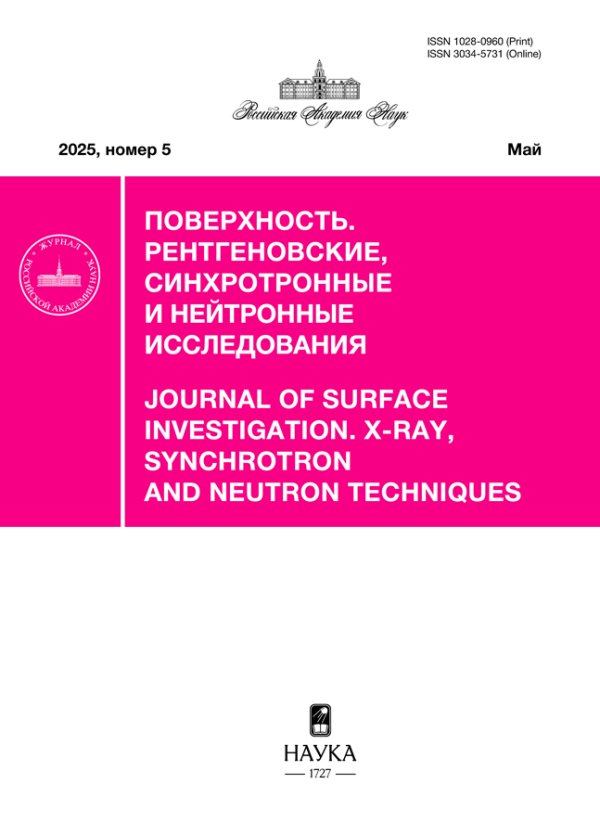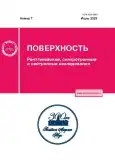Rotating Water-Cooled Beryllium Target for a Compact Neutron Source
- Authors: Shvets P.V.1, Prokopovich P.A.1, Fatyanov E.I.1, Clementyev E.S.1, Moroz A.R.2, Kovalenko N.A.2,3, Goihman A.Y.1
-
Affiliations:
- Research and Educational Center “Functional Nanomaterials”, I. Kant Baltic Federal University
- NRC “Kurchatov Institute” – PNPI
- NRC “Kurchatov Institute”
- Issue: No 7 (2023)
- Pages: 63-70
- Section: Articles
- URL: https://journals.rcsi.science/1028-0960/article/view/137783
- DOI: https://doi.org/10.31857/S1028096023070178
- EDN: https://elibrary.ru/TDHCZT
- ID: 137783
Cite item
Full Text
Abstract
With the declining number of neutron sources in the world and the decommissioning of research reactors, projects to develop compact neutron sources are attracting more and more attention. The DARIA project suggests the use of a proton beam accelerated to an energy of 13 MeV, which, hitting a beryllium target, creates a neutron beam through the a nuclear reaction (p, n). The reaction yield is three neutrons per 1000 protons, so in this process most of the proton beam energy is released as heat in the target. Intense heating of a beryllium target in the absence of sufficient heat removal can lead to its destruction. A system has been developed for efficient heat removal from a beryllium target during its irradiation with a proton beam. It is a rotating water-cooled beryllium target and is capable of removing a large thermal power from the inner (water-side) surface of the target. For the proposed system, numerical simulations of the speed and pressure of the coolant were carried out. The limiting pressure leading to the destruction of the target and the flows corresponding to this limiting pressure were calculated. Thermodynamical simulations allowed us to evaluate both the average temperature of the system and the peak local (caused by short high-energy pulses) temperatures.
About the authors
P. V. Shvets
Research and Educational Center “Functional Nanomaterials”, I. Kant Baltic Federal University
Author for correspondence.
Email: pshvets@kantiana.ru
Russia, 236041, Kaliningrad
P. A. Prokopovich
Research and Educational Center “Functional Nanomaterials”, I. Kant Baltic Federal University
Email: pshvets@kantiana.ru
Russia, 236041, Kaliningrad
E. I. Fatyanov
Research and Educational Center “Functional Nanomaterials”, I. Kant Baltic Federal University
Email: pshvets@kantiana.ru
Russia, 236041, Kaliningrad
E. S. Clementyev
Research and Educational Center “Functional Nanomaterials”, I. Kant Baltic Federal University
Email: pshvets@kantiana.ru
Russia, 236041, Kaliningrad
A. R. Moroz
NRC “Kurchatov Institute” – PNPI
Email: pshvets@kantiana.ru
Russia, 188300, Gatchina
N. A. Kovalenko
NRC “Kurchatov Institute” – PNPI; NRC “Kurchatov Institute”
Email: pshvets@kantiana.ru
Russia, 188300, Gatchina; Russia, 123182, Moscow
A. Yu. Goihman
Research and Educational Center “Functional Nanomaterials”, I. Kant Baltic Federal University
Email: pshvets@kantiana.ru
Russia, 236041, Kaliningrad
References
- Amaldi E. // Phys. Rep. 1984. V. 111. № 1–4. P. 1. https://www.doi.org/10.1016/0370-573(84)90214-X
- Аксенов В.Л. // Природа. 1996. № 2. С. 3.
- Vetter J.E. // IEEE Trans. Nucl. Sci. 1981. V. 28. № 3. P. 3455. https://www.doi.org/10.1109/TNS.1981.4332134
- Carpenter J.M. // EPJ Web Conf. 2020. V. 231. P. 01001. https://www.doi.org/10.1051/epjconf/202023101001
- Jeon B., Kim J., Lee E., Moon M., Cho S., Cho G. // Nucl. Engin. Technol. 2020. V. 52. № 3. P. 633. https://www.doi.org/10.1016/j.net.2019.08.019
- Yamagata Y., Hirota K., Ju J., Wang S., Morita S., Kato J., Otake Y., Taketani A., Seki Y., Yamada M., Ota H., Bautista U., Jia Q. // J. Radioanalyt. Nucl. Chem. 2015. V. 305. P. 787. https://www.doi.org/10.1007/s10967-015-4059-8
- Inada T., Kawachi K., Hiramoto T. // J. Nucl. Sci. Technol. 1968. V. 5. № 1. P. 22. https://www.doi.org/10.1080/18811248.1968.9732391
- Патент № 2 640 396 C2 (РФ). Мишень для генерации нейтронов / Кэнсэр Интеллидженс КЭА Системс, ИНК. Сиода Сигео, Накамура Масару // 2018.
- Патент № 2 610 301 C1 (РФ). Нейтроногенерирующая мишень / Институт ядерной физики им. Г.И. Будкера СО РАН (ИЯФ СО РАН). Таскаев С.Ю., Баянов Б.Ф. // 2017.
- Willis C., Lenz J., Swenson D. // Proc. LINAC08. 2009. P. 223.
- Bayanov B., Belov V., Taskaev S. // J. Phys.: Conf. Ser. 2006. V. 41. P. 460. https://www.doi.org/10.1088/1742-6596/41/1/051
- Neutron Generators for Analytical Purposes. Vienna: International Atomic Energy Agency, 2012. P. 145.
- Sordo F., Fernandez-Alonso F., Terrón S., Magán M., Ghiglino A., Martinez F., Bermejo F.J., Perlado J.M. // Phys. Proced. 2014. V. 60. P. 125. https://www.doi.org/10.1016/j.phpro.2014.11.019
- Paul M., Tessler M., Friedman M., Halfon S., Palchan T., Weissman L., Arenshtam A., Berkovits D., Eisen Y., Eliahu I., Feinberg G., Kijel D., Kreisel A., Mardor I., Shimel G., Shor A., Silverman I. // Eur. Phys. J. A. 2019. V. 55. P. 44. https://www.doi.org/10.1140/epja/i2019-12723-5
- Reed C.B., Nolen J.A., Specht J.R., Novick V.J., Plotkin P. // Nucl. Phys. A. 2004. V. 746. P. 161. https://www.doi.org/10.1016/j.nuclphysa.2004.09.127
- Nakamura H., Agostini P., Ara K. et al. // Fusion Engin. Design. 2008. V. 83. № 7–9. P. 1007. https://www.doi.org/10.1016/j.fusengdes.2008.06.014
- Sekine K., Mitamura Y., Murabayashi S., Nishimura I., Yozu R., Kim D.-W. // Artificial Organs. 2003. V. 27. № 10. P. 892. https://www.doi.org/10.1046/j.1525-1594.2003.00035.x
- Szydlo Z., Ochoński W., Zachara B. // Tribotest. 2005. V. 11. № 4. P. 345. https://www.doi.org/10.1002/tt.3020110406
- Nakatsuka K. // J. Magn. Magn. Mater. 1993. V. 122. № 1–3. P. 387. https://www.doi.org/10.1016/0304-8853(93)91116-O
- Subbotina V.V., Pavlov K.A., Kovalenko N.A., Konik P.I., Voronin V.V., Grigoriev S.V. // Nucl. Instrum. Methods Phys. Res. A. 2021. V. 1008. P. 165462. https://www.doi.org/10.1016/j.nima.2021.165462
Supplementary files

















